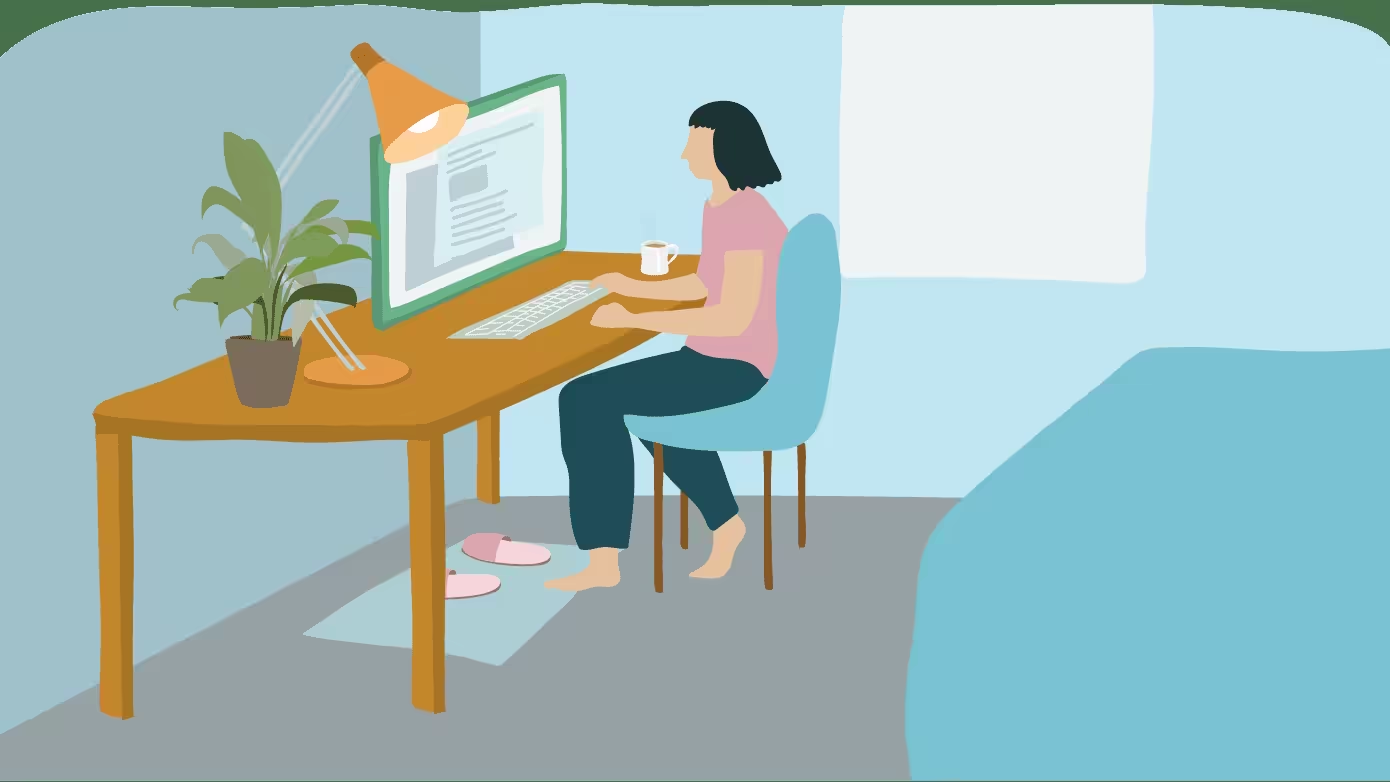Ergonomics is more than just about posture or your hands’ positioning on the laptop. Technically speaking, it’s about understanding and modifying all the factors that influence human efficiency within working environments. From books like 1995’s Evaluation of Human Work: A practical ergonomics methodology to modern ergonomically designed office equipment and spaces, ergonomics is a wide and encompassing subject.
Modern businesses continuously expand their reach. Many companies have an office space for their main headquarters and hire employees who work from home. With modern workspaces emerging, it’s not surprising to see people investing in home office supplies, furniture, and equipment.
Today, thanks to the sudden digital migration brought on by the global health crisis, there is a need to revisit the subject for the 4.8 million people in here in Zimbabwe with access to high-speed Internet. If you want to use your Internet connection to start earning from home, here’s how you can get started on the right foot.
The first and most important step to achieving home office ergonomics is dedicating a space in your home for just this purpose. Bloomberg’s guide to home office history in the 20th century recalls how dedicated home offices are nothing new. From bedroom study tables to business proprietors setting up shop below their residences, the world is no stranger to working from home. And whatever your trade, having a dedicated space will allow you to do this in the most efficient manner. While the best option would be to have a room in your home designated solely for work, you can also make do with a corner of your living room, or even just a table in a quiet space.
Source: Freepik
What’s important is to have a space where everything you need is within reach – a space that you can modify according to your personal and daily working needs. As Pain Free Working’s guide to work-from-home ergonomics notes, working in the same spot every day can help a lot in keeping momentum and adapting faster to a work-from-home environment. Furthermore, unlike formal office environments where changing anything even for ergonomic purposes may entail paperwork, you won’t have that problem in your home office. You can just go ahead and get a table and chair combination that perfectly fits your height and size. With the right basic office equipment, you can also better resist the temptation of moving your work to the couch or the bed, which is bad for both your back and your productivity.
This underscores why ergonomics is often reduced to just finding the right furniture: comfort is one of the keys to an efficient workspace. Yet, The Camden Chronicle notes how you should also take into account having a few square feet of open space within your home office. This will allow you to stretch at anytime between long periods of sitting down and working, and better maintain comfort throughout the workday. The more you invest in furniture, electronics, and other home office equipment that can keep you comfortable, the better you can focus on the work at hand. Apart from furniture that can help you maintain the correct posture, this can include ergonomic keyboards, laptop stands, and even wrist rests that help you avoid carpal tunnel syndrome during long nights in front of the computer.
According to the National Library of Medicine, carpal tunnel syndrome occurs in one to three persons per 1,000 people yearly in the United States. In most developed countries, the prevalence is 50 per 1000. The possible explanation for this finding is the high rate of outsourcing data entry, writing, customer service, and other computer and client assistance tasks to remote workers in developed countries.
Carpal tunnel syndrome causes hand or forearm numbness and tingling. Pain can also occur. This condition affects the median nerve, which is being compressed in the wrist due to repetitive movement, such as typing on a keyboard. Carpal tunnel syndrome in most patients can get worse over time.
Doctors can prescribe pain relievers or recommend wearing a splint. The last resort is carpal tunnel release, a surgery that involves cutting through the ligament to reduce compression of the median nerve.
If you want to protect yourself from developing carpal tunnel syndrome and other musculoskeletal problems while working remotely, set up an ergonomic home office. You don’t need to have a fancy office chair for better back support. You can just put a towel, pillow, or cushion behind your lower back. Another option is affordable chair cushions designed for lumbar support or even orthopedic seats that can suit any chair. Orthopedic seats are saddle-like products that tilt your pelvis for a more comfortable position.
In short, ergonomics is about taking care of your body and ensuring that your working conditions are conducive for both health and productivity. Design your home office with these factors in mind and you’ll be well on the way to adjusting to a work-from-home career.
Related: What Are the Best Window Brands?
Jea Mason is a health and wellness writer with a love for gym-free fitness. Her passion is to help her readers stay fit, healthy, and pain-free at home. She practices yoga and tai chi.

